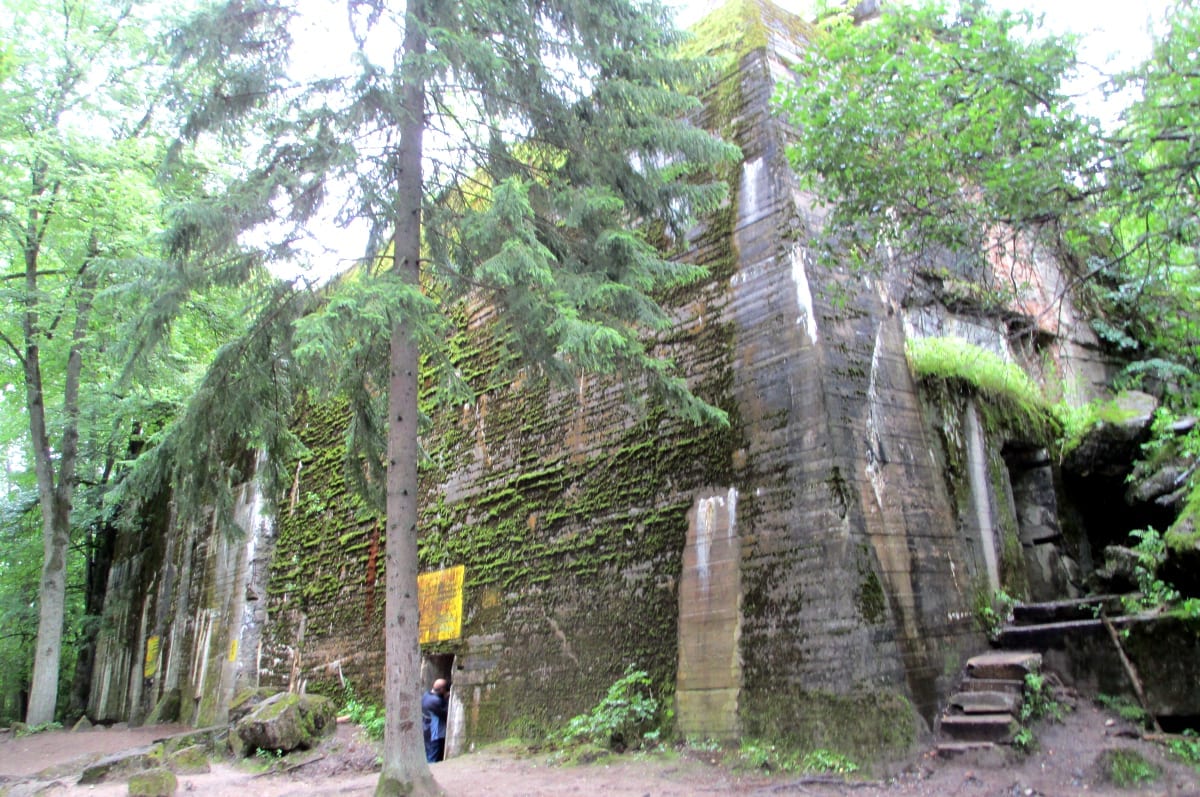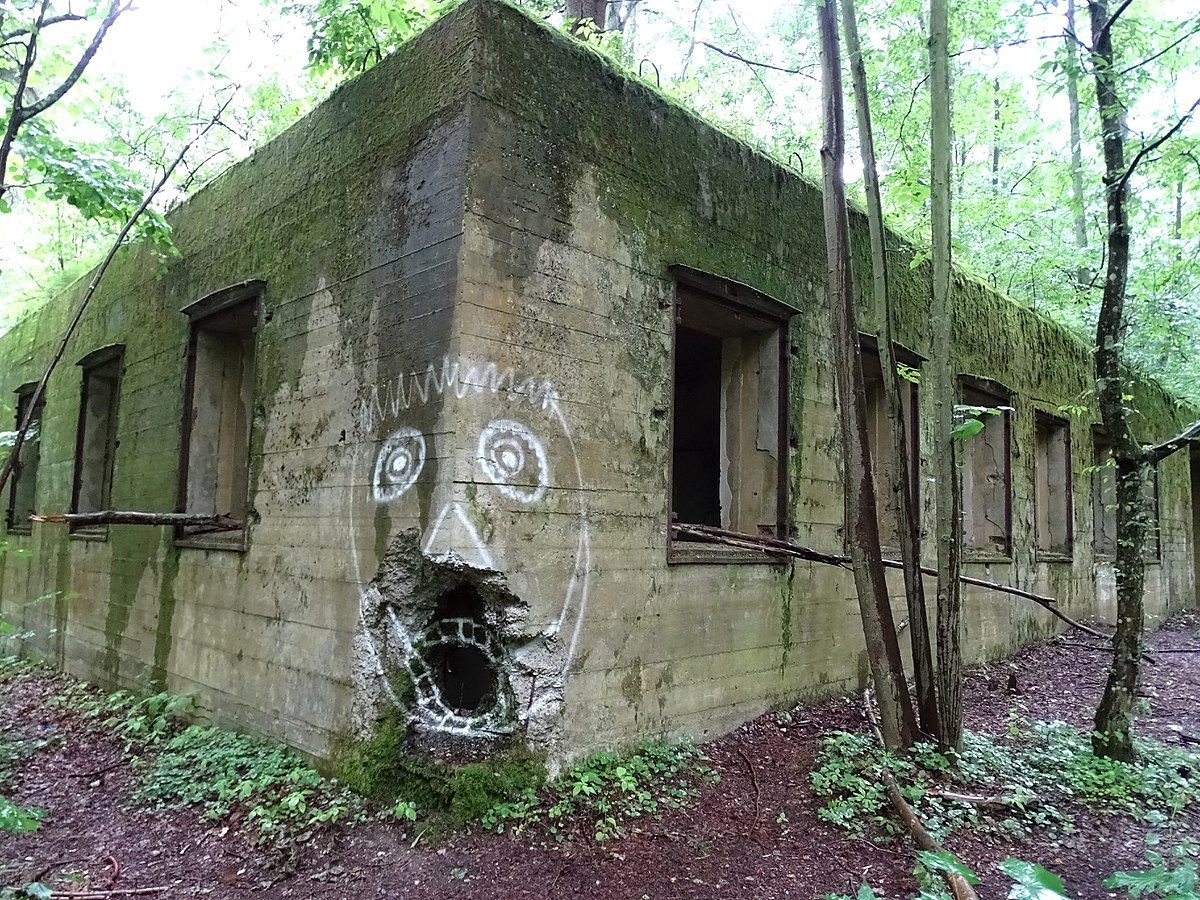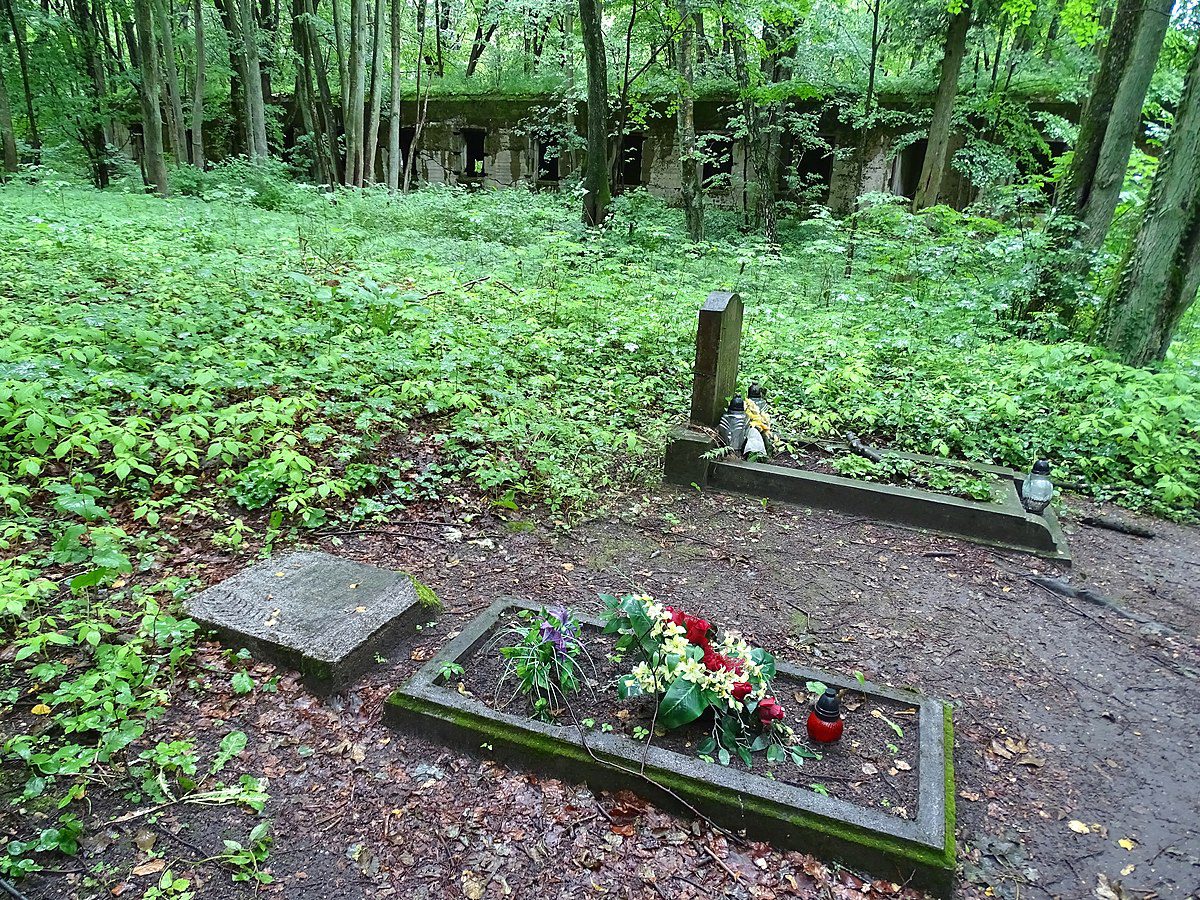
Wolfsschanze
Wolf’s Lair – updated 15 January 2023.
The Wolf’s Lair (German: Wolfsschanze) was a top secret Nazi German military headquarters located in the Masurian woods in north-eastern Poland. It was built for Adolf Hitler and his top military staff during the Second World War. The complex consisted of more than 50 buildings, including bunkers, barracks, and various other structures. It was in operation from 1941 to 1944 and was the site of several key meetings and conferences, including the famous July 20, 1944 attempt on Hitler’s life, known as Operation Valkyrie.
Today, little remains of the complex, but some of the bunkers and foundations can still be seen.

Bunkers
Today Wolf’s Lair is 18 hectares of huge, overgrown and partly destroyed bunkers. During World War II, it was a top-secret, high security site surrounded by three security zones and guarded by personnel from the SS-Begleitkommando des Führers, Reichssicherheitsdienst and the Wehrmacht’s armoured Führerbegleitbrigade.
3,000 German labourers
Wolf’s Lair was an impressive feat of engineering with a remote location carefully chosen far away from typical aerial bombing targets such as transport routes and towns. 3,000 German labourers were involved in its construction consisting of 80 structures. These included seven bombproof bunkers for the top leaders of the Third Reich with walls and ceiling up to 8m thick.

3 security zones
The decision to build Wolf’s Lair was made in the autumn of 1940. Built in the middle of a protecting forest and located far from major roads. The complex occupied more than 6.5 km2 (2.5 sq. mi) and consisted of three separate security zones.
Sperrkreis 1
The most important of which was Sperrkreis 1 (Security Zone 1), in which was located the Führer Bunker and concrete shelters of members of the inner circle such as Hermann Göring, Martin Bormann, OKW chief Wilhelm Keitel and “chief of operations” OKW Alfred Jodl.
There was a total of ten bunkers in this area, all camouflaged and protected by 2 metres (6 ft 7 in) of steel-reinforced concrete. Hitlers was on the northern end, with all its windows facing north to avoid direct sunlight. Both Hitler’s and Keitel’s bunkers had rooms in which military conferences could be held.
Sperrkreis 2
Sperrkreis 2 (Security Zone 2) included military barracks and housing for several important Reich Ministers like Albert Speer, Joachim von Ribbentrop and Fritz Todt as well as Hitler’s escort battalion, the Führer Begleit Brigade.
Sperrkreis 3
Sperrkreis 3 (Security Zone 3) made up the outer security area of the compound, complete with land mines, special security troops and guard houses.
Nearby airfield
Close by was a facility for the Wehrmacht Operations Staff, and army headquarters was located several kilometres to the northeast of the FHQ complex. All these installations were served by a nearby airfield and train lines.
About two thousand people lived and worked at Wolf’s Lair at its peak, among them twenty women.
Security
The security around the bunkers was impressive and included barbed wire barriers, gun emplacements and minefields in addition to some of Hitler’s most war-hardened troops. The camp included an emergency airstrip and a backup airfield 5km away to allow the Nazi Elite a quick exit if the need ever arose. The natural camouflage of the forest was further enhanced with artificial vegetation-like screens suspended on wires and changed according to the season of the year. The Allies did not discover Wolf’s Lair until 1945.
Hitler
Hitler spent a long time in Wolf’s Lair. He arrived on 26th June 1941 and stayed there until 20th November 1944 with only short trips away.

Having survived an assassination attempt within the complex in July 1944, Hitler left Wolf’s Lair as the Soviet Red Army approached a few months later.
Assassination attempts at Wolf’s Lair
The Wolf’s Lair was the location of the July 20 plot to kill Hitler. During the period of reconstruction of the Führer Bunker in the summer of 1944, the daily strategy meetings were moved to the little building known as the Lager barrack, where staff officer Claus von Stauffenberg carried a bomb hidden in a briefcase into the meeting room and placed it just a few feet away from Hitler.
At 12:43 p.m. the bomb devastated the interior of the building but left Hitler only slightly injured. However, four others died from their wounds a few days later. The force of the blast was diminished because a staff officer unknowingly moved the briefcase on the opposite side of a thick wooden table leg from where von Stauffenberg had placed it, probably saving Hitler’s life. It is believed that had the bomb exploded in the massive concrete Führer Bunker as originally intended, everyone in the structure including Hitler would have been killed.
The Escape
Just moments before the blast, the would-be assassin and his adjutant, Lieutenant Werner von Haeften rapidly made their way from the conference barrack toward the first guard post just outside Sperrkeis 1. After a short delay they were allowed to pass and proceeded along the southern exit road toward Rastenburg airport.
By the time they reached the guard house at the perimeter of Sperrkreis 2, the alarm had been sounded. According to the official Gestapo report, “at first the guard refused passage until von Stauffenberg persuaded him to contact the adjutant to the compound commander who then finally authorized clearance”. It was between here and the final checkpoint of Sperrkreis 3 that von Haeften tossed a second briefcase from the car containing a second bomb which was also intended to explode in the conference barrack.
It is believed that had this bomb also been placed with the other, everyone inside would have been killed. Checkpoint three, the final barrier located at the outer reaches of the Wolf’s Lair, was expected to prove impenetrable, but the two men were simply waved through to the Rastenburg airport.
Operation Valkyrie
Thirty minutes after the bomb blast the two men were airborne and, on their way, back to Berlin and Army general headquarters. It was in this building, called the Bendlerblock, that “Operation Valkyrie”, a covert plan to react to the breakdown in civil order of the nation and suppress any revolt was transformed into the secret plot to assassinate the Führer of the German Reich.
However, when it was discovered that Hitler was still alive, the plan was doomed and along with it von Stauffenberg, his adjutant Werner von Haeften and co-conspirators General Friedrich Olbricht and his chief of staff Colonel Albrecht Mertz von Quirnheim, who were arrested and executed in the courtyard of the Bendlerblock on the evening of July 20, 1944.
Red Army
The Wolf’s Lair complex was blown up on the 24 January 1945, just three days before the Red Army arrived. Many tons of explosives were required to do the job; one bunker required an estimated 8 tons of TNT. The minefield protecting the now ruined bunkers was still active with approximately 55,000 mines and it took 10 years to make the complex safe.

What to see
There’s not a lot to see nowadays, but with a little imagination and a site map or tour guide, you will be able to get a flavour of what life must have been like at Wolf’s Lair. The structures of the complex are conveniently numbered so that you can quickly ascertain what purpose they served. Number 13 is Adolf Hitler’s bunker, which is now just one wall but Göring’s home, number 16 is in surprisingly good condition.
FAQ
Q: What is the Wolf’s Lair?
A: The Wolf’s Lair (German: Wolfsschanze) was a top secret Nazi German military headquarters located in the Masurian woods in northeastern Poland. It was built for Adolf Hitler and his top military staff during the Second World War.
Q: What was the purpose of the Wolf’s Lair?
A: It was built as a top secret military headquarters for Adolf Hitler and his top military staff during the Second World War. It was the site of several key meetings and conferences, including the famous July 20, 1944 attempt on Hitler’s life, known as Operation Valkyrie.
Q: When was the Wolf’s Lair in operation?
A: It was in operation from 1941 to 1944.
Q: Can visitors tour the Wolf’s Lair today?
A: It is possible to visit today, but there is little left of the original complex and much of it is in ruins. Some of the bunkers and foundations can still be seen.